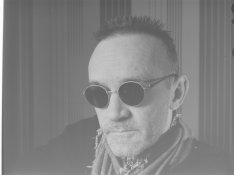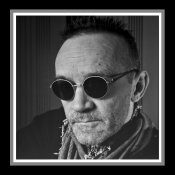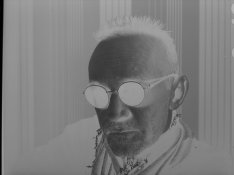My hybrid workflow at present is a loved hobby only - I shoot and develop 4x5 b+w film, and then scan using a cheap 5.1mp point-and-shoot DSCP100 - followed by tweeks and adjustments to the file using ''camera raw'' and CS3 photoshop. If I like an image enough, I will pay for a large file of the negative by drum-scan, and then re-adjust; and print using the bigger file size. I have plans for contact printing in the months to come.
The thing is....that when I look at my negatives after development, I instinctually think that I have mis-calculated in my exposure settings or that I have not developed properly, and also that I may be developing in a less than ''ideal'' developer solution for the specific film type. They just look ''poor''...
However, my final results, post-process; don't seem to be that bad, relatively speaking. And I'm happy enough about the outcomes most of the time.
My insecurity regarding the negatives' exposures is compounded by the amount of ''slide'' that I have to apply in the post-negative adjustment options.
I have added my latest inverted and otherwise untouched negative image shot on the light table, with the adjusted end-image; to highlight my issue - HP5+ in D76 1+1 10mins @68F...
Am I fretting needlessly - am I missing a trick - or am I unconsciously exposing correctly for the workflow process that I have adopted ? Things seem to work out okay, but the inverted negative images really do look scarily wanting.
I remember making adjustments in the darkroom when printing , but I don't have that luxury anymore so I can'tcompare the results from the different processes.
Just curious to know how others deal with these hybrid-workflow circumstances.
JP
The thing is....that when I look at my negatives after development, I instinctually think that I have mis-calculated in my exposure settings or that I have not developed properly, and also that I may be developing in a less than ''ideal'' developer solution for the specific film type. They just look ''poor''...
However, my final results, post-process; don't seem to be that bad, relatively speaking. And I'm happy enough about the outcomes most of the time.
My insecurity regarding the negatives' exposures is compounded by the amount of ''slide'' that I have to apply in the post-negative adjustment options.
I have added my latest inverted and otherwise untouched negative image shot on the light table, with the adjusted end-image; to highlight my issue - HP5+ in D76 1+1 10mins @68F...
Am I fretting needlessly - am I missing a trick - or am I unconsciously exposing correctly for the workflow process that I have adopted ? Things seem to work out okay, but the inverted negative images really do look scarily wanting.
I remember making adjustments in the darkroom when printing , but I don't have that luxury anymore so I can'tcompare the results from the different processes.
Just curious to know how others deal with these hybrid-workflow circumstances.
JP





 )
)
